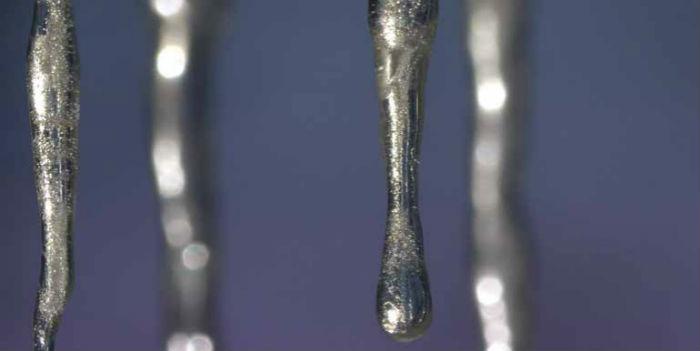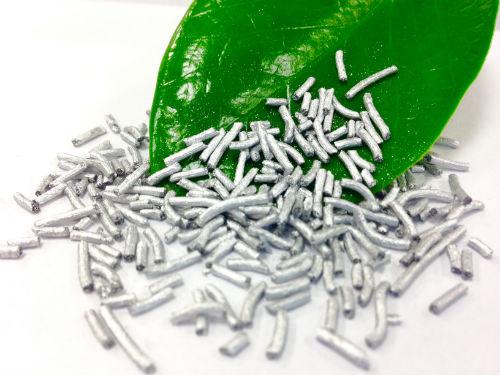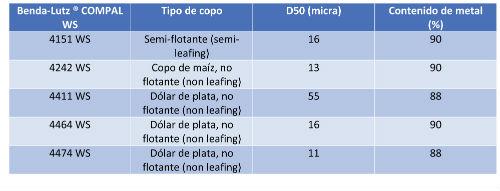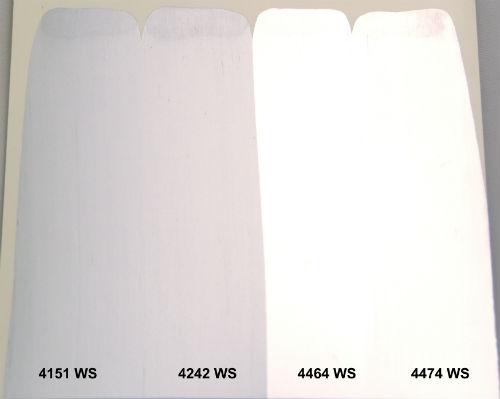 Introducing the development of aluminium concentrates for metal finishes with low volatile organic compound (VOC) content.
Introducing the development of aluminium concentrates for metal finishes with low volatile organic compound (VOC) content.
Aaron M. Hollman, Ingo Giesinger, Dieter Groβschartner*
Introduction: In recent decades, increasingly stringent environmental standards have been the main reason for driving change in the paint industry. China, the world's largest producer of coatings, is struggling due to poor air quality in many metropolitan areas.
To help reduce air pollution, the U.S. government recently enacted a new paint regulation related to volatile organic compound content. This new regulation establishes a tax (4 percent on the price on the invoice) for paint manufacturers on all paints whose level of volatile organic compounds ready to spray exceeds 420 g/L.
In addition to environmental regulations, another aspect that is driving changes is product safety. Paint producers, all over the world and specifically in China, are focusing more than ever on developing manufacturing processes and final products taking into account the highest level of safety in the workplace and in transportation.
These changes in the market pose challenges for manufacturers of pigment-based metallic finishes with aluminum. Solvent-based metal finishes predominate in all types of coating segments, including automotive (original manufacturer coating and new paint), industrial, consumer electronics, cans, coils, marine and others. A major challenge is the inherent chemical reaction between aluminum and water, which produces hydrogen gas. Therefore, a successful transition of metal finishes from solvents to water requires pigments with aluminum that are stable for aqueous systems.
This article introduces the technology of a new range of non-hazardous aluminium pigment concentrates, specially designed to provide long-term stability in water-based coatings and inks. These pigments make it possible to manufacture sustainable coatings with a content of low or zero volatile organic compounds. In addition, the pigments are offered in a granular form that disperses easily, for easy and safe handling, better stability during storage and numerous advantages in transport.
Technology
This range of pigment concentrates with non-hazardous aluminium is an original form of pigment presentation consisting of small aluminium sheets incorporated into a water-soluble solid base. This non-hazardous, concentrated solid or granulated pigment (see Figure 1) is easily dispersed in a wide range of water-based coatings, e.g. acrylics, urethanes, epoxies and more water-based. Once dispersed, the base provides long-term stability and resistance to hydrogen gas production, without diminishing the optical properties of the small aluminum sheets.

Figure 1.
Most silver coatings based on solvents and water are currently manufactured with aluminum pastes. For solvent-based systems, pigment is commonly offered at approximately 60 to 75 percent aluminum in mineral solvents or mineral solvents mixed with naphtha.
An immediate advantage of this new pigment is that it does not contain any solvents. Therefore, the constraints associated with the base solvent, which is usually flammable, are removed. These pigments, classified as non-hazardous, have numerous advantages in terms of transport, storage, handling and dosing.
For most water-based coatings, metal paste usually comes in 60 to 75 percent of small sheets of deactivated aluminum scattered in water or glycols. Those pastes allow for coatings with lower volatile organic compound content, but generally have a short shelf life.
In addition, deactivated aluminum sheets are usually exposed to water present in the base vehicle while the product is in storage. The granules of this aluminum pigment provide a longer service life and eliminate the possibility of gas production during storage. In fact, risk-free handling of the product makes those solid granules ideal for point-of-use applications.
Thanks to the original shape of the product, the incorporation of these metallic pigments is slightly different from working with traditional pastes. To incorporate the product, it is recommended to briefly soak the granules in an approximately equivalent amount of water. This premix should be mixed with low shear level. After it is fully dispersed, the premix should be added to the desired water-based system.
These aluminum pigments have been tested in a wide variety of paint systems and were found to have outstanding resistance to long-term gas production after preparation. It is important to note that the chemical composition of the paint can greatly affect the stability of the water. Manufacturers should avoid extreme pH conditions and very acidic resins. Therefore, it is recommended that laboratory tests be done to verify the performance of the product.
The first generation
The general properties of the first generation of these aluminium pigments are shown in Table 1. As indicated, this technology can be used to offer highly pigmented aluminum concentrates composed of a wide range of sheet types. All pigments shown in Table 1 are free of volatile organic compounds. The high pigment content, 88 to 90 percent metal, allows manufacturers to develop sustainable coatings with optimal formulation flexibility.

Table 1.
Laminated and non-laminated pigment intermediates have been developed. For laminated intermediates, the COMPAL WS process slightly reduces the laminated characteristics of the sheets. Therefore, grades that have the reference 4151 WS are classified as semi-laminated.
This technology can be applied to cornflakes and silver coin type sheets. The first generation includes one non-rolled medium-fine corn flake (D50~13m) and three unlaminated lenticular grades with a particle size (D50) of 11 to 55 m.
The first generation was selected to cover a wide range of optical effects. Reference 4411 WS, the largest particle size in the first generation, is generally used to provide high metallic luster for simple silver or smoked industrial coatings. The optical appearance of the medium fine to fine grades is shown in Figure 2. The comparison was made using a WB acrylic system containing about 19 percent pigment.
As clearly shown in Figure 2, silver coin grades (4464 WS and 4474 WS) provide significantly higher metallic luster at the angle of the face. As expected, these lenticular sheet geometries also show significantly greater travel or change in reflectivity (flop).

Figure 2.
When comparing corn flake grades, the 4151 WS is slightly brighter than the 4242 WS in most water-based systems. That's due to the slightly larger particle size and semi-laminated properties of this pigment.
This first generation can be used to produce sustainable coatings with premium gloss and travel (using 4464 WS or 4474 WS), intense metallic flash effect (using 4411 WS) or more economical silvers with outstanding coating power at low pigment concentration (using 4151 WS or 4242 WS). Thanks to the ease of handling, the different products can be easily mixed to produce an unlimited variety of metallic effects.
Conclusions
Global regulations controlling standard and volatile organic compound emissions will become increasingly stringent. Coating manufacturers need solutions to produce more sustainable and environmentally friendly products. The non-hazardous aluminium pigment concentrate, which is easy to disperse, makes it possible to produce metal finishes without volatile organic compounds and stable in the long term.
* Aaron M. Hollman*, Ingo Giesinger, Dieter Groβschartner. Sun Chemical Corporation, Performance Pigments. For correspondence: [email protected]

























Leave your comment